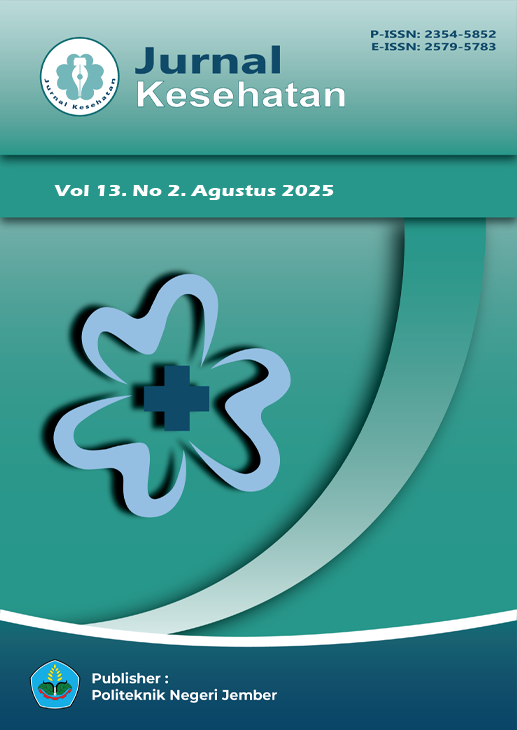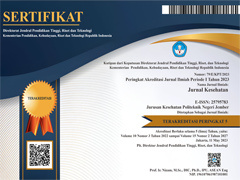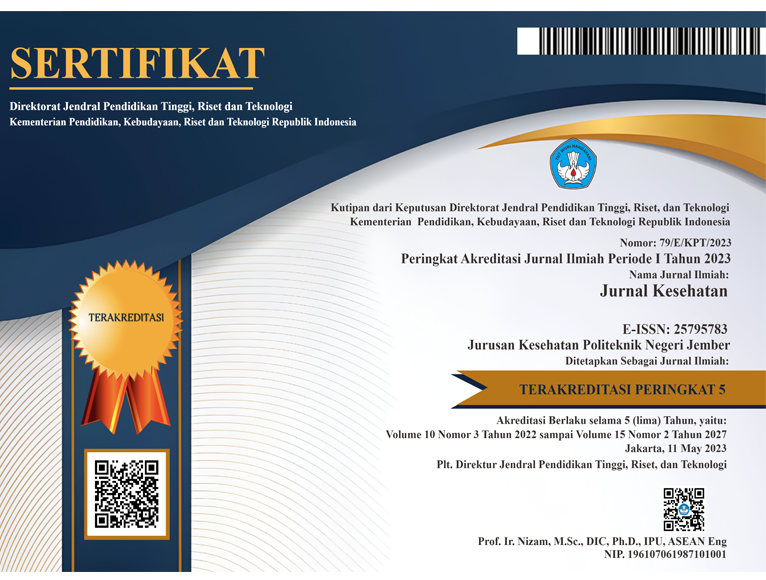Sari Tempe Kurma Sebagai Minuman Fungsional Bagi Penderita Diabetes Melitus
DOI:
10.25047/j-kes.v13i2.558Downloads
Abstract
Diabetes mellitus patients are advised to regulate their eating patterns by manage their portions, types and frequency of meals. Recommended food ingredients include foods that are low in simple carbohydrates, high in fiber, and low in fat. Tempeh is a source of vegetable protein that contains fiber, is low in fat, and contains the amino acid arginine which has the benefit of stabilizing blood glucose. Dates are a food that has high fiber content and various types of antioxidants which have a hypoglycemic effect. This study aims to identify the antioxidant activity and total sugar content of date tempeh milk products that are safe for people with diabetes mellitus. This research design determined two types of treatment formulations using tempeh: dates, i.e. 2:3 and 2:4 for testing nutritional analysis of total sugar content and antioxidant activity with 3 times repetitions. Total sugar content was tested using the titration method and antioxidant activity using the DPPH method. The research results showed that the higher the date palm content, the higher the antioxidant activity and the higher the total sugar content in date tempeh milk. It can be concluded that the tempeh date milk formula that is safe for diabetes mellitus patients is formula 1 (tempeh: dates = 2:3). The serving size for tempeh date milk that is safe for consumption is 50 ml. Serving size of tempeh date milk already contributes 25% of the energy from the recommendation of daily sugar consumption by the Indonesian Ministry of Health.
Keywords: Antioxidants, Diabetes Mellitus, Total Sugar, Dates, Tempeh
License
Copyright (c) 2025 Andrea Putri Sekar Tunjung, Oktavina Permatasari

This work is licensed under a Creative Commons Attribution-ShareAlike 4.0 International License.
Authors who publish in this journal agree to the following terms:
1. Copyright belongs to the medical journal as a publication
2. The author retains copyright and grants the journal rights to the first publication carried out simultaneously under a Creative Commons Attribution License which allows others to share the work with an acknowledgment of the author's work and initial publication in this journal.
3. Authors may enter into separate additional contractual arrangements for the non-exclusive distribution of the work (eg sending it to an institutional repository or publishing it in a book) with acknowledgment of initial publication in this journal.
4. Authors are permitted and encouraged to post work online (eg in institutional repositories or on their websites) before and during the submission process, as before and larger citations of published work (see Effects of Open Access).
Selengkapnya tentang teks sumber ini














